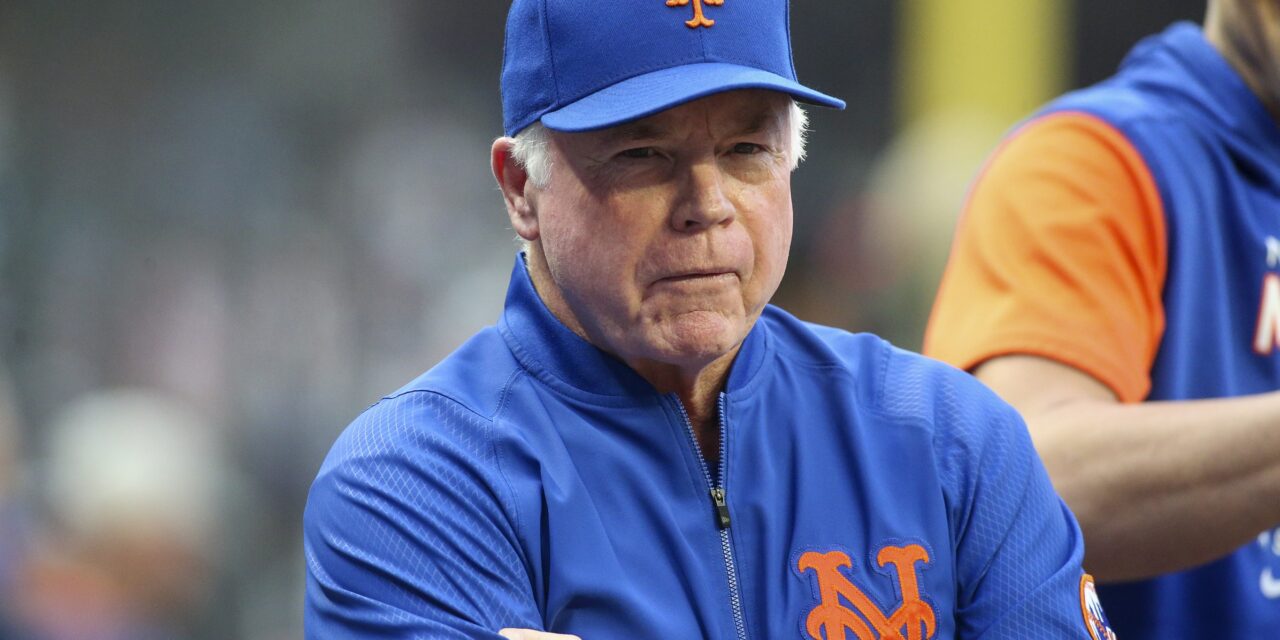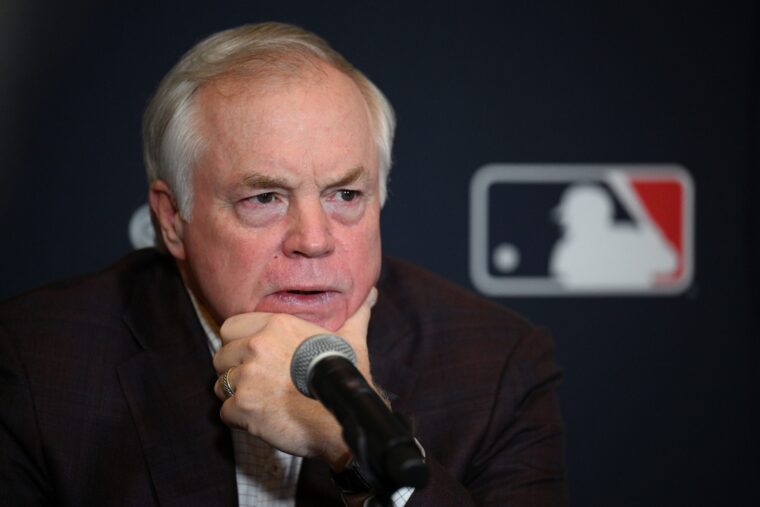
Orlando Ramirez-USA TODAY Sports
In the analytics era, lineup construction comes down to two central concepts that are often conflicting: batter strengths and handedness matchups.
In 2022, Buck Showalter seemed to stick with the dual philosophies that handedness > strengths and lineup consistency > matchups. Those ideals are also contradictory at times, which led to some strange lineup decisions.
The Mets will roll back a similar lineup in 2023, but a few lineup tweaks can pay some dividends. Let’s explore the strengths and weaknesses of the Mets’ hitters and the ideal lineup spot for each one.
Lineup Analytics
A 2020 article from Sports Betting Dime best encapsulates the sabermetric approach to lineup construction, at least from a strengths perspective. Therefore, I’m going to borrow their breakdown.
| Spot | Qualities |
|---|---|
| 1 | Highest OBP on team; Speed is important but ability to get on base matters much more |
| 2 | Highest wRC+ on team; Very high OBP; Best overall batter on the team; Must be consistent and balanced |
| 3 | Good overall batter; High wRC+; Less important than #5 spot; Likely 4th best hitter overall |
| 4 | Most powerful hitter on the team: Must have very high SLG%, HR, ISO |
| 5 | Good overall batter with extra emphasis on power. High wRC+; High SLG%; More important than #3 spot; Like 3rd best hitter overall |
| 6 | Average/good overall batter with emphasis on baserunning; high OBP and SB |
| 7 | Average overall hitter |
| 8 | Average overall hitter |
| 9 | Worst hitter on the team |
The main differences in an analytically-driven lineup are in the numbers two, three, and five spots. Whereas an old second hitter was often a light-hitting player whose function was to move the runner over, today’s No. 2 is often the best pure hitter on the team. The No. 3 is not as important in a sabermetric lineup, rather than the best hitter as it used to be. The No. 5 hitter is usually a better hitter than in the past and often takes the place of the old No. 3 hitter, at least power-wise.
Mets’ Sabermetric Lineup
Based on the breakdown above and disregarding handedness, here is the Mets’ ideal lineup construction (assuming that Eduardo Escobar will be the starting third baseman and Daniel Vogelbach will start the majority of the time due to a higher volume of righties faced):
- Brandon Nimmo (.385 career OBP)
- Jeff McNeil (131 career wRC+, .370 career OBP)
- Starling Marte (119 career wRC+; 136 in 2022)
- Pete Alonso (.535 career SLG, .274 career ISO)
- Francisco Lindor (118 career wRC+, 127 in 2022; .474 career SLG)
- Mark Canha (.349 career OBP, .367 in 2022, .377 OBP over last 4 seasons)
- Daniel Vogelbach (.793 OPS in 2022)
- Eduardo Escobar (.741 OPS in 2022)
- Omar Narvaez (.258/.343/.386 career slash line, but just .206/.292/.305 in 2022)
Against lefties, substitute either Darin Ruf or Tommy Pham for Vogelbach and perhaps flip them with Escobar.
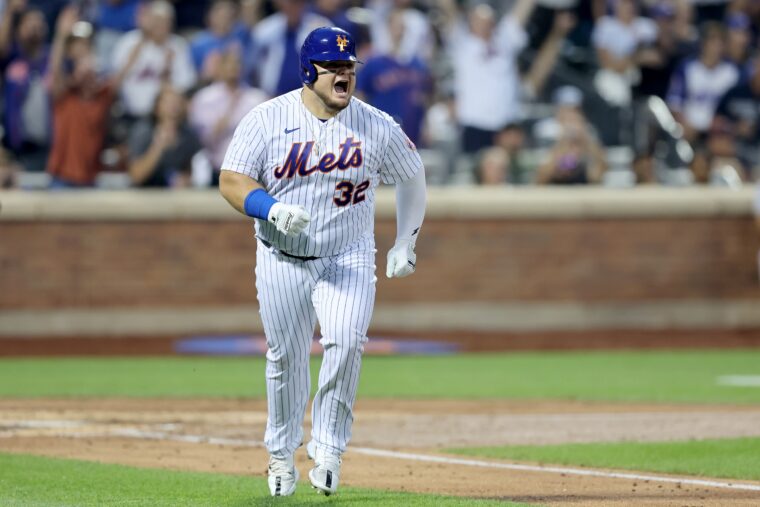
Brad Penner-USA TODAY Sports
By Handedness
The thing is that Buck Showalter seemed to follow his analytics guys pretty closely when it came to the lineup, and he focused more on handedness than anything else. Alternating between lefties and righties appeared to be the most important factor in setting up the Mets’ lineups in 2022.
Therefore, there was no chance that Jeff McNeil would bat second in the order, even though he is the Mets’ best and most consistent hitter. Following up the lefty Nimmo with a second lefty wasn’t going to cut it. The same went for allowing someone other than Daniel Vogelbach to protect Pete Alonso; even though Vogelbach’s plate approach appears to be walk-first, Vogelbach’s left-handed bat was prioritized as the No. 5 hitter.
This often resulted in a less-than-ideal lineup setup for the Mets to score runs. Starling Marte grounded into 19 double plays last season, the 12th-highest total in the Majors, despite missing 44 games. The Mets as a team were the ninth-worst in baseball with 0.75 double plays per game, including Pete Alonso‘s 17, Luis Guillorme‘s 15, and Tomas Nido‘s 15. McNeil, meanwhile, lowered his GIDP rate (in terms of DPs vs. opportunities) from 11.9% in 2021 to 5.3% in 2022, and his career BABIP is .332.
Furthermore, bringing in a lefty to face McNeil is not a surefire advantage, as he has a career .296 average, 115 wRC+, .756 OPS, and .336 BABIP against southpaws. Although those numbers are a decline from his splits against righties, they are still more than adequate. Why the fear of batting McNeil in the No. 2 hole?
You can argue that Marte has better stats against lefties and prioritizing the platoon advantage should matter more. Indeed, Marte hit .302/.366/.511/.877 against southpaws last season. However, at the very least, McNeil should take Marte’s place in the lineup against right-handed starters (the majority of the time). Marte may prefer not to switch up his spot in the batting order, but that should not preclude the team from putting out their best lineup.
If the Mets want to balance the priorities between handedness and an ideal lineup, they would consider putting Francisco Lindor in the No. 2 hole and batting McNeil fifth. This way, they are relatively balanced with lefties and righties due to Lindor’s switch-hitting capabilities, while McNeil still brings a lot of run-scoring to the table, albeit without the same power element.
Additionally, batting Canha sixth and Vogelbach seventh rather than the reverse maximizes both players’ abilities. Although both players get on base, Vogelbach has more pure power than Canha, as evidenced by the difference in their ISO, .194 vs. .136, and SLG, .433 vs. .403. Canha becomes another leadoff-style hitter with his on-base percentage, and then Vogelbach lengthens the lineup with his power.
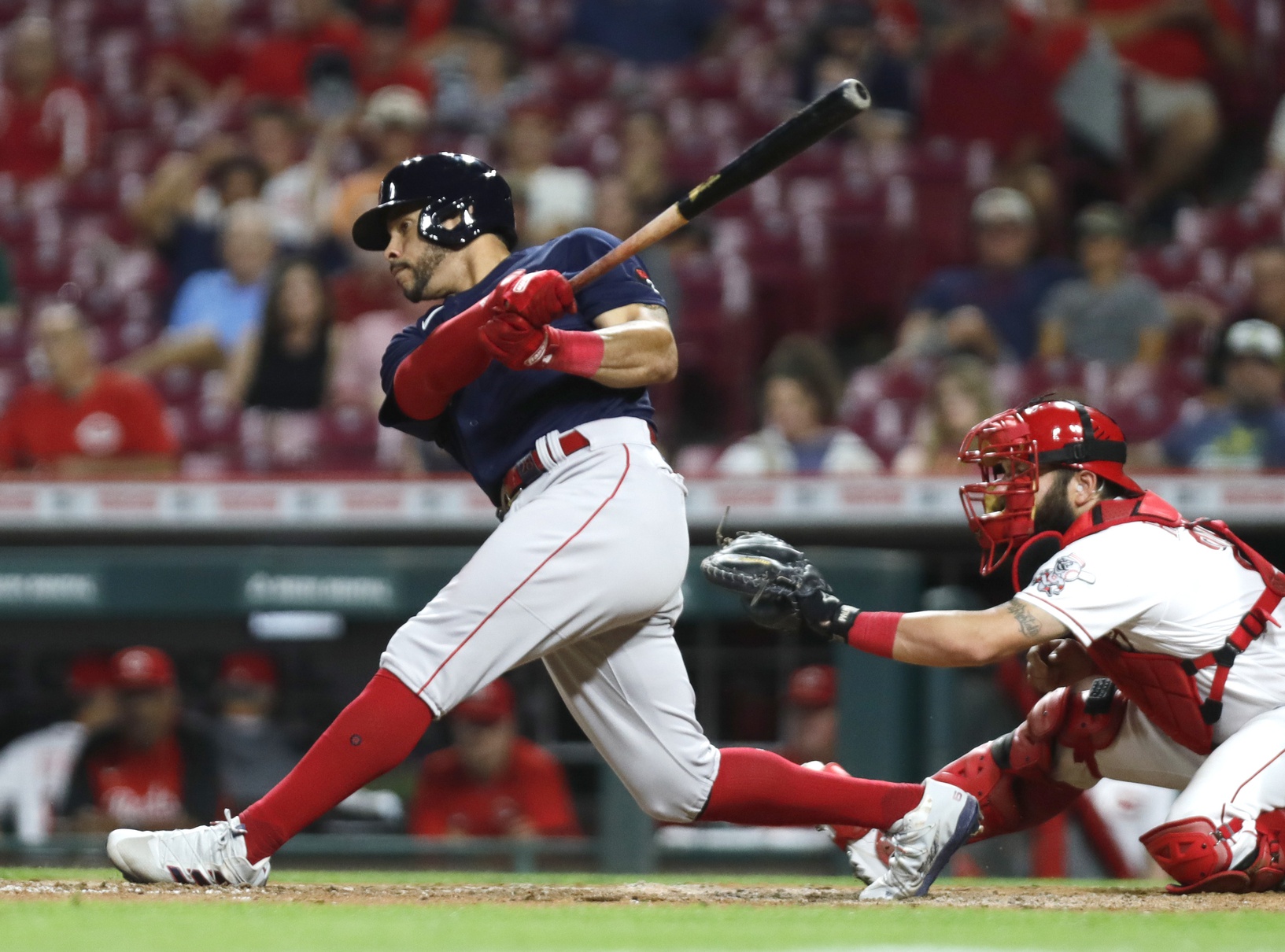
David Kohl-USA TODAY Sports
Ideal Lineup vs. Left-Handed Pitchers
To balance the priorities between handedness and analytics, here would be the Mets’ best lineup against lefties (with batting hand and 2022 slash line vs. lefties):
- Brandon Nimmo (L, .264/.358/.428/.786)
- Francisco Lindor (R, .271/.327/.457/.784)
- Starling Marte (R, .302/.366/.511/.877)
- Pete Alonso (R, .247/.364/.473/.836)
- Jeff McNeil (L, .312/.376/.382/.758)
- Tommy Pham (R, .273/.338/.446/.784)
- Eduardo Escobar (R, .259/.299/.519/.817)
- Mark Canha (R, .241/.335/.398/.733)
- Tomas Nido (R, .259/.303/.366/.669)
Yes, there are many consecutive right-handed hitters in this lineup, but that is partially in response to Marte’s strong performance against lefties last season. Furthermore, Pham should be higher in the lineup than Canha since he is better than Canha vs. lefties, even though Canha’s overall profile fits better with the analytical description of a typical No. 6 hitter.
Furthermore, if a team were to bring in a right-handed reliever against Marte and Alonso, both players hit righties quite well in 2022. Alonso has been stronger against righties than lefties for several years now. There is very little risk there. At the bottom of the lineup, Escobar is a switch-hitter and can also be pinch-hit for by Brett Baty if necessary.
I understand that the Mets are likely to switch up Marte and Lindor from my projection to preserve the lefty/righty alternation in the event of a right-handed reliever entering the game. However, Lindor in the No. 2 role makes more sense if only because of his reduced double-play rate. Lindor grounded into 11 double plays in 2022, a reduced 8.6% rate compared to Marte’s outlandish 18% number. This is not to say that Lindor is an ideal No. 2 hitter—that would be McNeil—but it wouldn’t be ideal to cluster two lefties at the top of the lineup against a left-handed pitcher, anyway.
I have been an outspoken critic of Darin Ruf‘s continued presence on the Mets’ roster and believe that the signing of Pham should foretell Ruf’s departure. Although Ruf’s career body of work against lefties is more impressive than Pham’s overall, Ruf’s performance post-trade deadline made him finish last season with a .222/.322/.430/.753 slash line against southpaws in 2022. Pham beats him there without having had such a slump as to cause a team to place him on the IL to be able to utilize his roster spot for a raw prospect in Mark Vientos.
Ideal Lineup vs. Right-Handed Pitchers
The Mets were a very strong hitting team against righties in 2022, putting up a .265/.337/.420/.756 statline while fielding the platoon of James McCann and Tomas Nido as part of the lineup. Considering that the Mets are unlikely to place two lefties back-to-back at the top of the batting order, here is their ideal lineup against righties for 2023:
- Brandon Nimmo (L, .280/.372/.405/.808)
- Francisco Lindor (L, .269/.343/.446/.789)
- Starling Marte (R, .288/.338/.450/.788)
- Pete Alonso (R, .279/.348/.532/.880)
- Jeff McNeil (L, .332/.385/.484/.869)
- Mark Canha (.280/.385/.405/.790)
- Daniel Vogelbach (.261/.382/.497/.879)
- Brett Baty (.207/.281/.414/.695, 33 PA)
- Omar Narvaez (.205/.285/.314/.600)
Ultimately, I still believe that Brett Baty will land in Triple-A to start the season and will only come up if he has a chance to start every day, either at third base or in left field (or a combination thereof). However, Baty would be an upgrade over Escobar as a left-handed hitter. Escobar’s career .246/.303/.424/.727 line vs. righties is uninspiring, but his .231/.293/.387/.681 line in 2022 was positively putrid. Although Escobar had been stronger against righties many times in the past, the likelihood that a 34-year-old will revert back to positive numbers vs. a hard-hitting left-handed batter continuing his strong Minor League numbers against righties favors the youngster.
The Mets will almost certainly flip Marte and Lindor in this lineup, just like in the one against lefties. As a result, they can expect many more Nimmo singles and walks to be wiped out due to double plays unless Nimmo suddenly learns how to steal bases (and this would be an ideal year to do so due to the limits placed on throwing over to first and the larger bases).
In this lineup, Canha is a better No. 6 hitter due to his strong year against righties in 2022. The one reservation is that Canha had a negative baserunning value overall in 2022 according to FanGraphs Baseball’s BsR metric, as his -1.0 mark is unlikely to reverse at age 34.
This iteration of a batting order is pretty heavy on lefties at the bottom. The Mets could choose to flip Vogelbach and Baty to preserve more of a lefty-righty alternation in the event of a left-handed reliever entering the game since they always pinch-hit for Vogelbach against lefties.
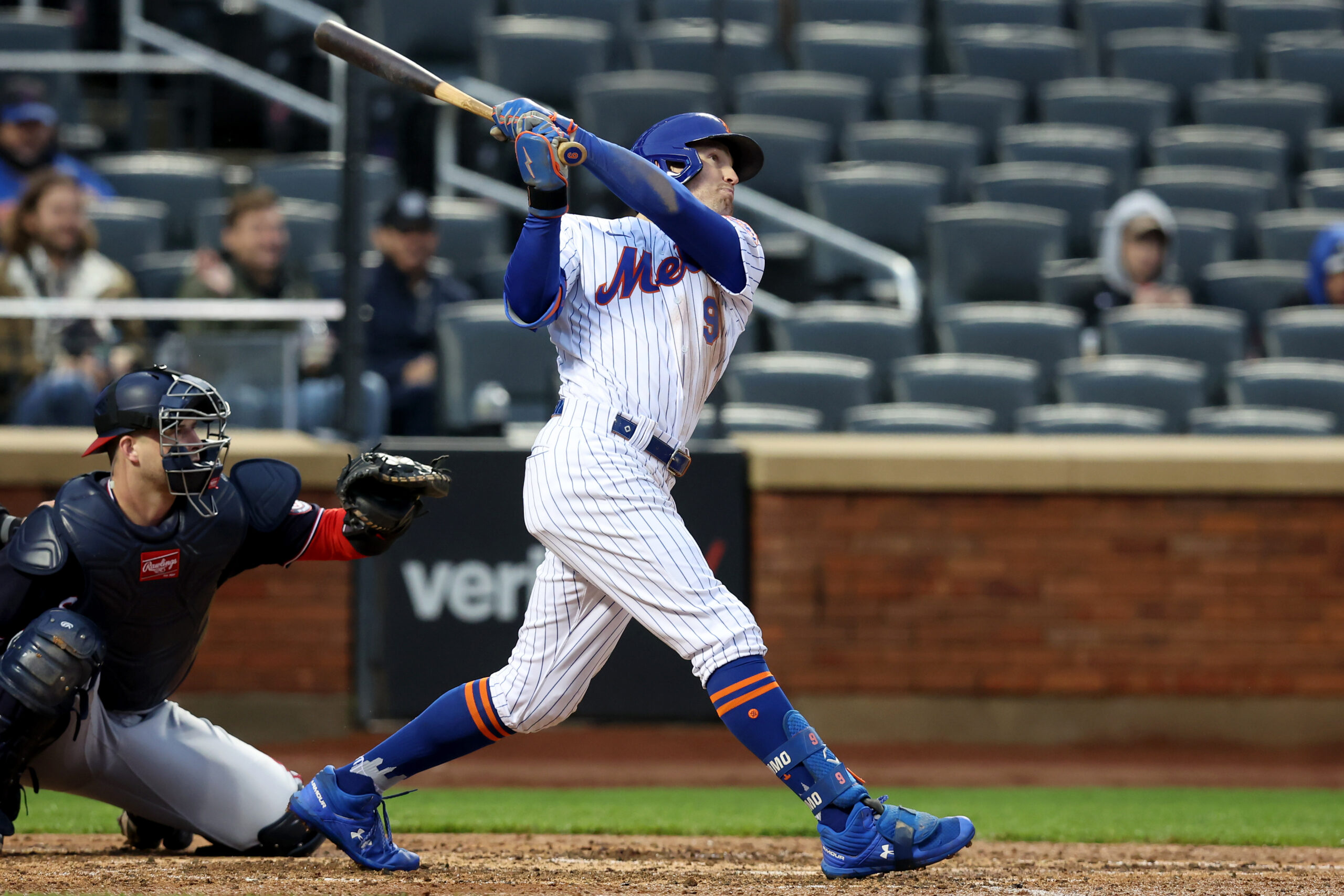
Brad Penner-USA TODAY Sports
Mets’ Most Likely Path
Alas, I am not the manager, and all I know is what the manager’s tendencies were in 2022. Here are the lineups I anticipate the Mets utilizing in 2023, at least to begin the season. There are many moving parts that can change depending on how various players perform.
Vs. Lefties
- Brandon Nimmo
- Starling Marte
- Francisco Lindor
- Pete Alonso
- Mark Canha
- Jeff McNeil
- Eduardo Escobar
- Darin Ruf
- Tomas Nido
This is the lineup the Mets used in Game 2 of the Wild Card Series against Padres lefty Blake Snell. Unfortunately, I believe the Mets still think that Ruf is worth the risk due to his positional versatility and his career ability to hit lefties. However, they will likely keep him down in the lineup to minimize the risk of disaster if Ruf continues where he left off in 2022. With the signing of Tommy Pham, they do have options elsewhere beyond bringing up Mark Vientos or Francisco Alvarez from Triple-A.
Vs. Righties
- Brandon Nimmo
- Starling Marte
- Francisco Lindor
- Pete Alonso
- Jeff McNeil
- Mark Canha
- Daniel Vogelbach
- Eduardo Escobar
- Omar Narvaez
This is the same lineup that the Mets trotted out against the Padres in Game 3 of the playoffs against righty Joe Musgrove, just with Narvaez replacing Nido. It’s perfectly balanced for the first seven spots, with three lefties at the bottom. Coming around to the top with a fourth lefty in Nimmo makes the Mets somewhat vulnerable to left-handed relievers; however, because the Mets always pinch-hit for Vogelbach against lefties and Escobar is characteristically stronger against them from the right side, they are willing to make that handedness sacrifice at the bottom of the order.
What Could Change?
I believe Baty will start the season in Triple-A but will see significant time in the Majors this year. How much depends on how he both hits and fields in the minors, as the Mets want to see his defense improved at third and/or in left. Baty was shaky as a defender in his brief big-league stint last season, putting up -0.2 UZR, 0 OAA, and -3 DRS in just 93 innings at third.
Additionally, Baty will most likely be the first one up if Escobar gets hurt. The Mets could always call up Danny Mendick, as they did with Yolmer Sanchez in 2022. That may depend on Baty’s progress at Syracuse.
If Baty does come to the Majors, it would be interesting to see what they would do with him. Luis Guillorme is also a left-handed batter and platooned with Escobar at times last year. Baty has far more upside with the bat than Guillorme, but the Mets love Guillorme’s glove. I doubt they would put Baty at DH in place of Vogelbach, which would leave him with very little playing time if the Mets chose to start Guillorme. Since they want Baty to get seasoning in the field, they would be left with a significant dilemma.
As for Francisco Alvarez, I may be in the minority who believes that he will not see time in the majors unless there is an injury. The Mets really want their top prospect to get more seasoning behind the plate, not just with his defense but also in calling a game.
If Ruf struggles, as mentioned early, the Mets could designate him for assignment and either use Pham in his spot or bring up Mark Vientos. Vientos didn’t exactly knock the doors off in his first stint in the Majors last year, but he has mashed lefties at all levels of the minors and tends to take some time to adjust each time he advances a level. The problem with Pham as a DH is that it leaves the Mets with no backup outfielder, and Vientos doesn’t give them any real positional value.
I could also see Narváez moving up in the lineup if he starts hitting more as he did in 2021, when he slashed .289/.365/.440/.805 in 325 at-bats against right-handed pitchers. Anything close to that would elevate him more toward the middle of the order. Since Narváez’s career line against righties is .268/.345/.406/.751 and he’s had an OPS above .800 in three of the five seasons in which he had at least 200 at-bats against them, it’s not an unreasonable assumption that he could improve upon last year’s career-low numbers. Even if he doesn’t, though, the Mets got very little offensive production from the catcher position last year and they’re more concerned about defense from that spot.
The Mets were fifth in runs scored last season, and they expect to reprise that performance in 2023. Whether or not they can do that will have to do with individual performance but also maximizing their ability to string hits together. The batting order has a sneakily important role in that equation.

